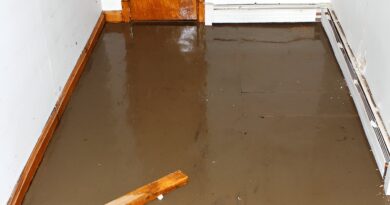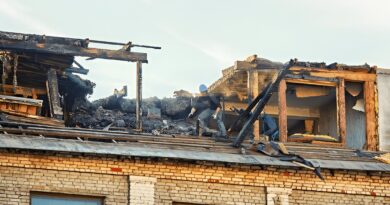The Silent Invader: How Mold Detection Prevents Long-Term Property Damage
Mold is often referred to as a silent invader, creeping into homes and buildings without notice. This insidious fungus can wreak havoc on both health and property if left unchecked. Understanding the importance of mold detection is crucial for homeowners and property managers alike. By identifying mold early, you can prevent extensive damage and safeguard your living environment. This article delves into the significance of mold detection, its health implications, and effective strategies for prevention and remediation.
Understanding Mold: The Basics
Mold is a type of fungus that thrives in damp, humid conditions. It reproduces through spores, which can easily become airborne and spread throughout a property. While there are many types of mold, some, like black mold (Stachybotrys chartarum), are particularly notorious for their health risks. Mold can grow on various surfaces, including wood, paper, and drywall, especially in areas prone to moisture.
The Growth Conditions of Mold
Mold requires specific conditions to flourish:
- Moisture: High humidity levels or water leaks create an ideal environment for mold growth.
- Organic Material: Mold feeds on organic materials, making homes with wood, paper, or fabric particularly vulnerable.
- Temperature: Mold thrives in warm environments, typically between 60°F and 80°F.
Common Types of Mold
While there are thousands of mold species, some of the most common types found in homes include:
- Aspergillus: Often found in soil and decaying vegetation, it can cause respiratory issues.
- Penicillium: Known for its blue-green color, it can grow on food and building materials.
- Cladosporium: This mold can appear as dark green or black spots and is commonly found in damp areas.
The Importance of Mold Detection
Detecting mold early is vital for preventing long-term property damage and health issues. Mold can compromise the structural integrity of a building and lead to costly repairs. Moreover, prolonged exposure to mold spores can result in serious health complications.
Signs of Mold Infestation
Recognizing the signs of mold is the first step in effective detection:
- Visible Mold Growth: Dark spots or patches on walls, ceilings, or floors.
- Musty Odors: A persistent, unpleasant smell often indicates hidden mold.
- Water Damage: Stains or discoloration on surfaces can signal moisture problems.
The Role of Regular Inspections
Conducting regular inspections is essential for early mold detection. Homeowners should check areas prone to moisture, such as bathrooms, kitchens, and basements. Professional mold inspections can also provide a thorough assessment of potential problem areas.
Health Risks Associated with Mold Exposure
Mold exposure can lead to a variety of health issues, particularly for sensitive individuals. Understanding these risks is crucial for maintaining a safe living environment.
Respiratory Issues
Inhaling mold spores can trigger respiratory problems, including:
- Allergic Reactions: Symptoms may include sneezing, runny nose, and itchy eyes.
- Asthma Attacks: Mold can exacerbate asthma symptoms, leading to severe attacks.
- Chronic Sinusitis: Prolonged exposure can result in persistent sinus infections.
Neurological Symptoms
Some studies suggest that exposure to certain types of mold may lead to neurological symptoms, such as:
- Cognitive Impairment: Difficulty concentrating or memory loss.
- Headaches: Frequent headaches can be a sign of mold exposure.
- Fatigue: Chronic fatigue may result from ongoing exposure to mold spores.
The Risks of DIY Mold Removal
While it may be tempting to tackle mold removal on your own, DIY methods can pose significant risks. Without proper knowledge and equipment, you may inadvertently spread mold spores or fail to eliminate the problem entirely.
Potential Hazards of DIY Removal
- Chemical Exposure: Many cleaning agents contain harsh chemicals that can be harmful if inhaled or improperly used.
- Incomplete Remediation: Without professional assessment, hidden mold may remain, leading to recurring issues.
- Health Risks: Improper handling of mold can increase exposure, exacerbating health problems.
When to Seek Professional Help
If you suspect a significant mold problem, it’s best to consult with professionals. They have the expertise and tools necessary to conduct thorough inspections and effective remediation.
Effective Mold Detection Techniques
Implementing effective mold detection techniques can help identify issues before they escalate. Here are some methods to consider:
Visual Inspections
Regular visual inspections can help catch mold growth early. Focus on areas with high moisture levels, such as:
- Bathrooms: Check for mold around sinks, tubs, and toilets.
- Kitchens: Inspect under sinks and around appliances.
- Basements: Look for signs of water damage or dampness.
Moisture Meters
Using moisture meters can provide valuable insights into hidden moisture levels within walls and floors. High readings may indicate potential mold growth.
Air Quality Testing
Professional air quality testing can identify mold spores in the air, providing a comprehensive assessment of indoor air quality. This method is particularly useful for detecting hidden mold.
Preventing Mold Growth
Preventing mold growth is far more effective than dealing with an infestation. Here are some strategies to keep your home mold-free:
Control Humidity Levels
Maintaining low humidity levels is crucial for mold prevention. Consider the following:
- Use Dehumidifiers: These devices can help reduce moisture in the air, particularly in basements and bathrooms.
- Ventilation: Ensure proper ventilation in high-moisture areas by using exhaust fans and opening windows.
Address Water Leaks Promptly
Water leaks can create ideal conditions for mold growth. Regularly inspect your home for leaks and address them immediately. Common areas to check include:
- Pipes: Look for signs of leaks under sinks and around appliances.
- Roofs: Inspect for missing shingles or water stains on ceilings.
Regular Cleaning
Regular cleaning can help prevent mold growth. Focus on areas prone to moisture, and consider using mold-resistant products when renovating or building.
The Role of Mold Remediation Services
When mold is detected, professional remediation services can effectively address the issue. These experts have the training and equipment necessary to eliminate mold and restore a safe environment.
Comprehensive Assessment
Professional mold remediation begins with a thorough assessment of the affected areas. This includes:
- Identifying the Source: Understanding the cause of mold growth is crucial for effective remediation.
- Testing: Conducting air and surface tests to determine the extent of the infestation.
Effective Remediation Techniques
Once the assessment is complete, remediation professionals will implement various techniques, including:
- Containment: Isolating affected areas to prevent the spread of spores.
- Removal: Safely removing contaminated materials and cleaning surfaces.
- Restoration: Repairing any damage caused by mold growth.
Long-Term Solutions for Mold Prevention
To ensure long-term protection against mold, consider implementing these solutions:
Regular Maintenance
Regular maintenance of your home can prevent mold growth. This includes:
- Roof Inspections: Check for damage and ensure proper drainage.
- Gutter Cleaning: Keep gutters clear to prevent water buildup.
Education and Awareness
Educating yourself and your family about mold prevention can make a significant difference. Encourage everyone to report signs of moisture or mold promptly.
Professional Inspections
Scheduling regular professional inspections can help catch potential mold issues before they escalate. This proactive approach can save you time and money in the long run.
Conclusion
Mold detection is a critical aspect of maintaining a safe and healthy living environment. By understanding the risks associated with mold and implementing effective detection and prevention strategies, homeowners can protect their properties and loved ones. Whether through regular inspections, professional remediation, or proactive maintenance, taking action against mold is essential for long-term health and safety. Don’t let mold become a silent invader in your home—stay vigilant and prioritize mold detection to safeguard your property and well-being.
For more information about Mold Detection in Union New Jersey please contact:
Business Name: Green Guard Mold Remediation Of Union
Address: 1620 US-22, Union, NJ 07083, United States
Phone: +1 908-263-1697




